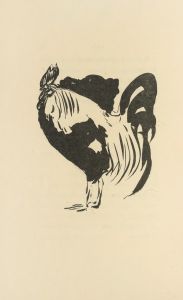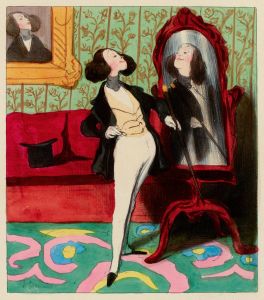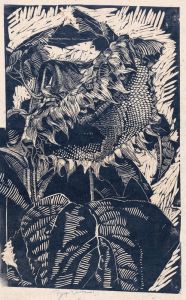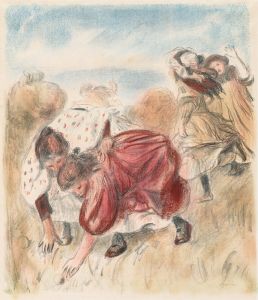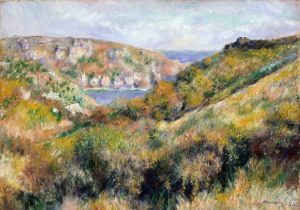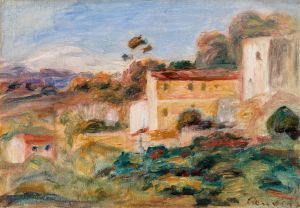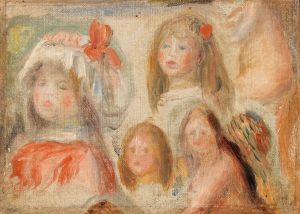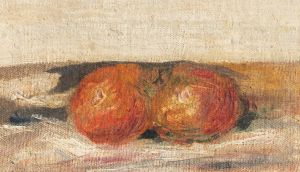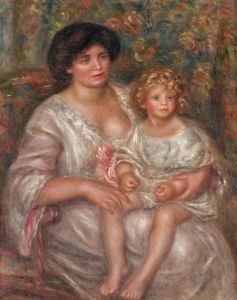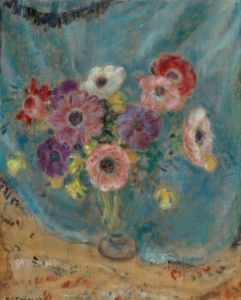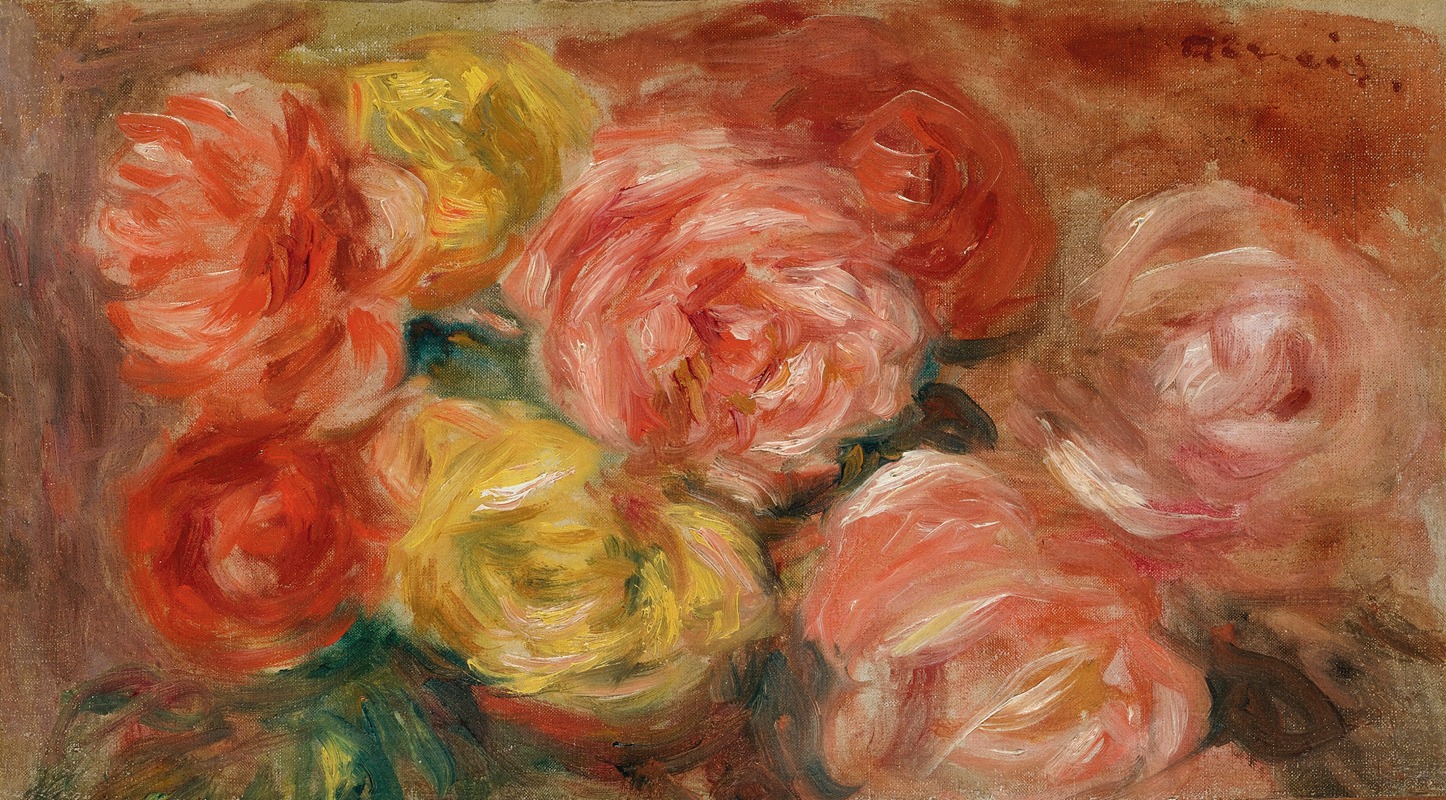
Nature Morte Aux Roses
A hand-painted replica of Pierre-Auguste Renoir’s masterpiece Nature Morte Aux Roses, meticulously crafted by professional artists to capture the true essence of the original. Each piece is created with museum-quality canvas and rare mineral pigments, carefully painted by experienced artists with delicate brushstrokes and rich, layered colors to perfectly recreate the texture of the original artwork. Unlike machine-printed reproductions, this hand-painted version brings the painting to life, infused with the artist’s emotions and skill in every stroke. Whether for personal collection or home decoration, it instantly elevates the artistic atmosphere of any space.
Pierre-Auguste Renoir, a leading figure in the Impressionist movement, is renowned for his vibrant light and saturated color, often focusing on people in intimate and candid compositions. However, his work also includes a number of still lifes, among which "Nature Morte Aux Roses" is a notable example. This painting exemplifies Renoir's ability to capture the delicate beauty of flowers, a subject that he returned to throughout his career.
"Nature Morte Aux Roses" is a still life painting that showcases Renoir's skill in rendering floral compositions. The painting features roses, a subject that has been popular in art for centuries due to their association with beauty and transience. Renoir's treatment of the roses is characterized by his typical loose brushwork and vibrant color palette, which imbue the flowers with a sense of life and immediacy. The roses are depicted in various stages of bloom, adding a dynamic quality to the composition.
Renoir's approach to still life painting was influenced by his Impressionist contemporaries, who sought to capture the effects of light and atmosphere in their work. In "Nature Morte Aux Roses," Renoir uses light to enhance the texture and form of the petals, creating a sense of depth and volume. The interplay of light and shadow in the painting highlights the delicate structure of the roses, while the background is kept relatively simple to focus attention on the flowers themselves.
The painting reflects Renoir's interest in the decorative potential of still life subjects. Unlike some of his Impressionist peers who often depicted everyday objects with a sense of realism, Renoir's still lifes are more concerned with the aesthetic arrangement of color and form. This approach aligns with his broader artistic philosophy, which prioritized beauty and harmony over the depiction of modern life.
Renoir's "Nature Morte Aux Roses" is also indicative of his broader artistic evolution. While he began his career deeply entrenched in the Impressionist movement, Renoir gradually moved towards a more classical style in his later years. This painting, with its focus on form and composition, can be seen as a bridge between his early Impressionist works and his later, more structured pieces.
The exact date of "Nature Morte Aux Roses" is not clearly documented, but it is consistent with Renoir's work from the late 19th to early 20th century, a period during which he produced numerous still lifes. These works were often created during times when Renoir was unable to work outdoors due to weather conditions or health issues, providing him with an opportunity to explore the subtleties of indoor lighting and composition.
Renoir's still lifes, including "Nature Morte Aux Roses," have been appreciated for their beauty and technical skill. They offer insight into the artist's versatility and his ability to infuse even the simplest subjects with a sense of vitality and charm. Today, Renoir's works, including his still lifes, are celebrated for their contribution to the Impressionist movement and their enduring appeal.
In summary, "Nature Morte Aux Roses" is a testament to Pierre-Auguste Renoir's mastery of color, light, and form. It reflects his Impressionist roots while also hinting at his later stylistic developments. Through this painting, Renoir captures the ephemeral beauty of roses, creating a work that continues to resonate with audiences for its elegance and artistic finesse.





